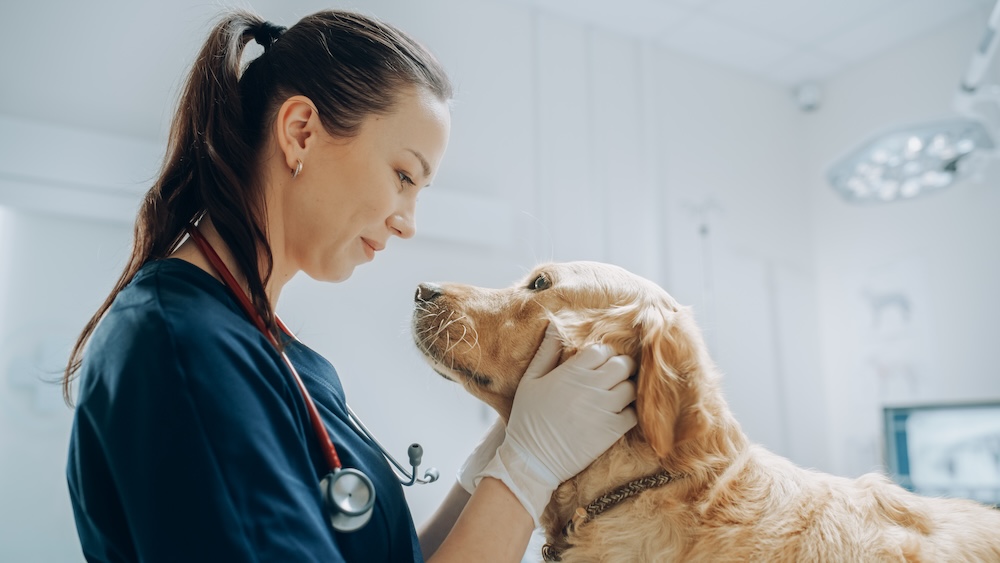As pet owners, discovering lumps and bumps on your dog’s skin can be alarming. While not all lumps are cancerous, it’s essential to understand the potential risks and the importance of early detection and treatment. At Faithful Friends Veterinary Clinic, we’re committed to helping you navigate these concerns and provide the best care for your canine companion. We’re here to explore common types of lumps and bumps in dogs, the risks associated with dog skin cancer, and steps you can take to ensure your dog’s health and well-being.
Common Types of Lumps and Bumps
Dogs can develop various types of lumps and bumps on their skin, many of which are benign. However, it’s crucial to have any new growths examined by a veterinarian to determine their nature.
Benign Tumors
Lipomas: These are soft, fatty tumors commonly found in middle-aged and older dogs. Lipomas are usually harmless but can grow large enough to cause discomfort or interfere with movement.
Sebaceous Cysts: These are small, round lumps filled with sebum, a greasy substance produced by the sebaceous glands. They are generally harmless but can become infected if they rupture.
Histiocytomas: These are benign skin tumors commonly found in young dogs. They usually appear as small, raised, red lumps and often resolve on their own without treatment.
Malignant Tumors
Mast Cell Tumors: These are one of the most common types of skin cancer in dogs. Mast cell tumors can vary in appearance and behavior, making them challenging to diagnose without a biopsy.
Melanomas: These tumors develop from pigment-producing cells and can be benign or malignant. Malignant melanomas are aggressive and can spread to other parts of the body.
Squamous Cell Carcinomas: These tumors arise from the skin’s outer layer and are often found on areas exposed to the sun. They can be locally aggressive and may spread to nearby tissues.
Identifying and Assessing Lumps
Regularly checking your dog’s skin for lumps and bumps is crucial for early detection. When examining your dog, pay attention to the following characteristics:
- Size: Measure the lump and note any changes in size over time.
- Shape: Observe whether the lump is round, irregular, or flat.
- Texture: Feel the lump to determine if it’s soft, firm, or hard.
- Location: Note the location of the lump and whether it’s attached to the skin or underlying tissues.
- Color: Observe any changes in color, especially if the lump is red, black, or ulcerated.
If you notice any lumps or bumps on your dog’s skin, schedule an appointment with your veterinarian for a thorough examination and possible biopsy to determine the nature of the growth.
Diagnosing Skin Cancer
Diagnosing dog skin cancer involves several steps, including:
- Physical Examination: Your veterinarian will conduct a thorough physical examination to assess the lump’s characteristics and check for other growths.
- Fine Needle Aspiration (FNA): This minimally invasive procedure involves using a thin needle to extract cells from the lump for microscopic examination.
- Biopsy: If FNA results are inconclusive, a biopsy may be performed to obtain a larger tissue sample for analysis.
- Imaging: X-rays, ultrasounds, or CT scans may be used to determine if the cancer has spread to other parts of the body.
Treatment Options
The treatment for skin cancer in dogs depends on the type and stage of the tumor. Common treatment options include:
- Surgery: Surgical removal of the tumor is often the first line of treatment. In some cases, additional tissue may be removed to ensure complete excision.
- Radiation Therapy: Radiation may be used to target and destroy cancer cells that cannot be surgically removed.
- Chemotherapy: Chemotherapy may be recommended for certain types of skin cancer, especially if the cancer has spread.
- Immunotherapy: This treatment helps boost the dog’s immune system to fight cancer cells more effectively.
Preventive Measures
While not all cases of skin cancer can be prevented, there are steps you can take to reduce your dog’s risk:
- Sun Protection: Limit your dog’s exposure to the sun, especially during peak hours. Use pet-safe sunscreen on areas with little or no fur, such as the nose and ears.
- Regular Check-Ups: Schedule regular veterinary check-ups to monitor your dog’s health and catch any potential issues early.
- Healthy Diet: Provide a balanced diet rich in antioxidants to support your dog’s immune system.
- Avoid Carcinogens: Minimize your dog’s exposure to known carcinogens, such as tobacco smoke and certain chemicals.
Consult with your Vet
At Faithful Friends Veterinary Clinic, we’re dedicated to providing the best care for your canine companion. Regularly checking for lumps and bumps and seeking veterinary advice can help ensure early detection and effective treatment of dog skin cancer. If you have any concerns about your dog’s skin health, don’t hesitate to contact us for a thorough examination and personalized care plan. Together, we can help your dog live a happy, healthy life.




